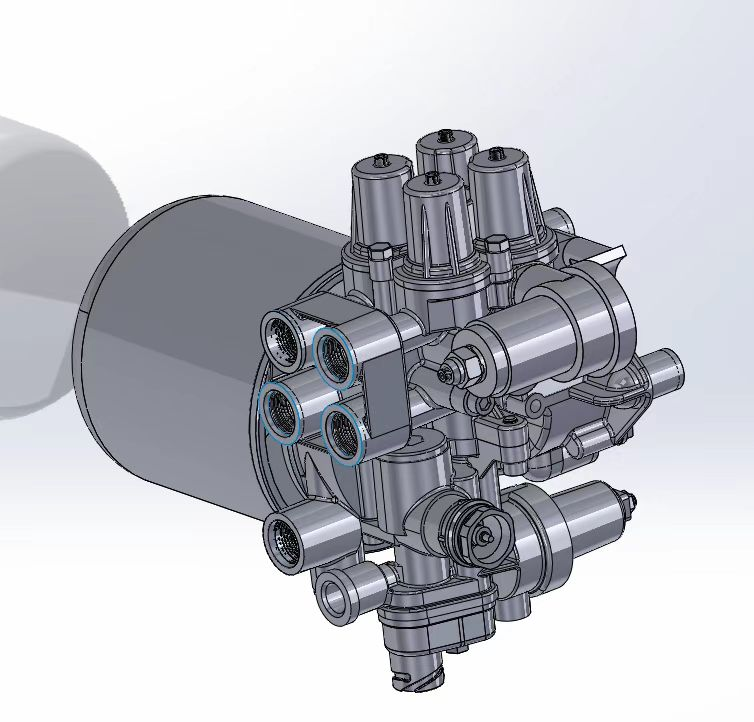Understanding the Role of Brake Shoes in Vehicle Safety
Brake shoes play a major role in how cars stop. They create the friction needed to slow vehicles down or bring them to a complete halt. Without proper friction from these parts, stopping becomes much harder, which obviously affects safety on the road. Good quality brake shoes mean shorter stopping distances, something that matters a lot when drivers need to react quickly in emergencies. Studies show bad brake shoes are behind many traffic accidents, so it makes sense why mechanics always stress regular checks and replacements. For anyone who drives regularly, knowing what brake shoes do isn't just technical knowledge but actual life-saving information. After all, when brakes fail at high speeds, nobody wants to find out if their car can stop fast enough.
Differences Between Drum Brakes and Disc Brake Systems
Knowing how drum brakes differ from disc brakes really matters when people are trying to decide what kind of car they want. Drum brakes work by having these brake shoes push outwards against the drum itself to generate friction needed to halt the vehicle. Disc brakes do things differently though they have brake pads that squeeze down on a rotating disc, which changes how they actually stop the car. When it comes to stopping power, drum brakes generally hold up better when there's a lot of weight involved, which is why many big trucks still stick with them. But if rain becomes an issue, disc brakes usually come out ahead because their open setup lets water drain away faster compared to those closed drum systems where moisture tends to get trapped inside.
Picking between these brake systems really comes down to what works best for different situations on the road. Drivers who spend time in rainy areas might find disc brakes give them an edge when stopping suddenly. On the flip side, cars that haul heavy cargo all the time tend to perform better with drum brakes under those conditions. Getting familiar with how each type behaves makes all the difference when it comes time to replace parts or schedule regular checks. Most mechanics will tell anyone listening that knowing this stuff helps keep everyone safer while saving money in the long run too.
Looking at replacement costs for brake shoes reveals that drum brakes tend to be cheaper since they have a simpler construction. For truck owners, getting quality brake pads matters a lot, especially when dealing with tough road conditions or heavy loads. When trying to decide between different braking systems, talking to someone experienced at a local garage often pays off because they know what works best for particular models and usage patterns. Checking how worn down those brake pads are on a regular basis makes sense too. Following manufacturer guidelines about when to replace them helps keep the whole braking system working properly over time without unexpected failures down the road.
Signs Your Brake Shoes Need Replacement
Squealing or Grinding Noises
Strange noises coming from brakes, such as squealing or grinding, usually mean there's something wrong with the brake shoes. Most of the time, these sounds come from little metal tabs built into the brakes that rub against the rotor when they get low on material. When we hear squealing, it generally means those warning tabs are doing their job. But grinding sounds are different story altogether. That kind of noise often means serious damage has already happened to parts beyond just the brake shoes themselves. Getting these issues fixed right away saves money in the long run and keeps everyone safer on the road. No one wants to be stuck on the side of highway because ignored brake problems turned into major mechanical failure.
Reduced Braking Efficiency
When brake shoes start to wear down, drivers often notice reduced braking power as one of the first signs something's wrong. The car takes longer to stop, and the brake pedal feels softer than usual, which means it's time to check things out before they get worse. Longer stopping distances aren't just inconvenient they create real dangers on the road, especially when sudden stops are needed. Regular brake checks aren't optional they're essential for anyone who wants to stay safe behind the wheel. A well maintained braking system keeps everyone safer and makes driving generally more pleasant too.
How to Check Brake Pad Wear (Visual and Functional Tests)
Looking at brake pads regularly through simple visual checks helps spot when they start wearing down. When the metal backing becomes visible or the pads themselves get really thin, it's time to replace them. A quick test drive can tell a lot too - listen for grinding noises and feel how responsive the brakes actually are when pressed. Sticking to a routine inspection schedule keeps things under control before problems develop. This kind of maintenance isn't just about safety; it also saves money in the long run since worn out brakes don't last forever. So next time someone asks why I check my car's brakes so often, I'll just say it's better to be safe than sorry on those long drives across town.
Choosing the Right Brake Shoe Material for Your Needs
Organic vs. Semi-Metallic vs. Ceramic: Pros and Cons
Selecting the appropriate brake shoe material depends largely on what kind of driving someone does and what vehicle they're working with. Organic brake shoes tend to run quieter, so they work well for everyday city driving and lighter duty applications. But these materials often wear down quicker when subjected to heavy usage or harsh conditions. Semi metallic options generally handle heat better and perform stronger overall, which makes them good picks for tougher situations. Many drivers opt for these when their cars regularly face stressful operating conditions, though it's worth noting that this type tends to generate more noise along with increased brake dust accumulation. Ceramic pads provide smooth stops and stay relatively quiet compared to semi metallic alternatives. While ceramics do last longer and create less noise, they might struggle with heat management in heavier applications like trucks where excessive heat buildup becomes problematic. Every material brings different benefits to the table, so matching the right brake shoe material to actual driving requirements ensures both performance quality and long term reliability based on real world needs.
High-Performance Brake Pads for Heavy-Duty Use
Brake pads designed for high performance stand up to the tough demands faced in heavy duty applications including trucks and sports cars. Manufacturers often make these pads from special materials such as iron carbon blends or unique metal compounds which help them handle heat better and last longer under stress. The goal here is straightforward reliability and solid performance, giving drivers extra confidence when things get intense on the road. Anyone looking at high performance brake pads should think about what kind of vehicle they have, where they drive most often, and exactly what their performance requirements are before making a choice that keeps everyone safe while keeping the car running properly. For folks serious about getting maximum efficiency without compromising safety during heavy usage scenarios, these pads really matter because they stop problems caused by too much weight or overheating thanks to innovations in modern braking tech.
Cost Considerations for Brake Shoe Replacement
Average Brake Shoes Replacement Cost Breakdown
Getting new brake shoes installed isn't cheap either, generally costing between $150 and $300 depending on what car we're talking about. Prices jump around quite a bit based on the make and model of the vehicle plus where someone lives since labor rates vary so much across different areas. When looking at all the costs involved, most of it goes toward buying the actual parts needed for the job along with paying whoever does the installation work. Sometimes mechanics will charge additional fees too if they find problems with other parts like worn out brake drums or damaged rotors while doing the replacement. Knowing exactly what goes into those repair bills helps drivers plan better financially before heading into the shop. This kind of knowledge makes a big difference when trying to avoid surprise charges down the road and keeping track of regular maintenance spending over time.
Budget vs. Premium Options: Balancing Quality and Affordability
Deciding whether to go for cheap or expensive brake shoes is something most drivers struggle with at some point. The budget ones look tempting because they cost less upfront, but they tend to wear down quicker than expected. This means replacing them more often which actually ends up costing more money over time plus there are safety risks involved too. Premium brake shoes might come with a bigger price tag initially, but they last longer and perform much better under pressure. When we talk about quality products here, we're looking at safer stops, reliable braking action day after day without needing constant maintenance. So instead of just thinking about what fits into our wallet right now, car owners should really consider how important good brakes actually are for both their safety and wallet health in the long run.
Maintenance Tips to Extend Brake Shoe Lifespan
Avoiding Overheating and Premature Wear
Brake shoes tend to wear out faster when exposed to heat and stress. To keep them going longer, drivers should watch out for situations that cause excessive heating. Gentle driving habits make a big difference here. Avoid slamming on brakes whenever possible, especially during summer months or when stuck in traffic. Smooth, planned stops instead of emergency halts help maintain brake efficiency while putting less strain on all those metal parts. Checking brakes regularly isn't just good practice either. Spotting small problems early prevents them from turning into expensive repairs down the road. Regular maintenance keeps everything working properly and makes sure the car remains safe to drive.
When to Schedule Professional Inspections
Getting a professional to check brakes at least yearly makes good sense if we want to avoid those sudden brake shoe problems nobody expects. During these checks, technicians usually spot things like weird sounds coming from wheels or when stopping takes longer than normal, both of which mean someone needs to take another look right away. People who keep up with regular brake checks tend to have safer cars overall. Knowing that experts have looked everything over gives drivers confidence that small problems get fixed before turning into big dangers while driving. Plus, sticking to this kind of schedule matches what most mechanics recommend about replacing brake pads, keeping them working properly for longer periods between replacements.







